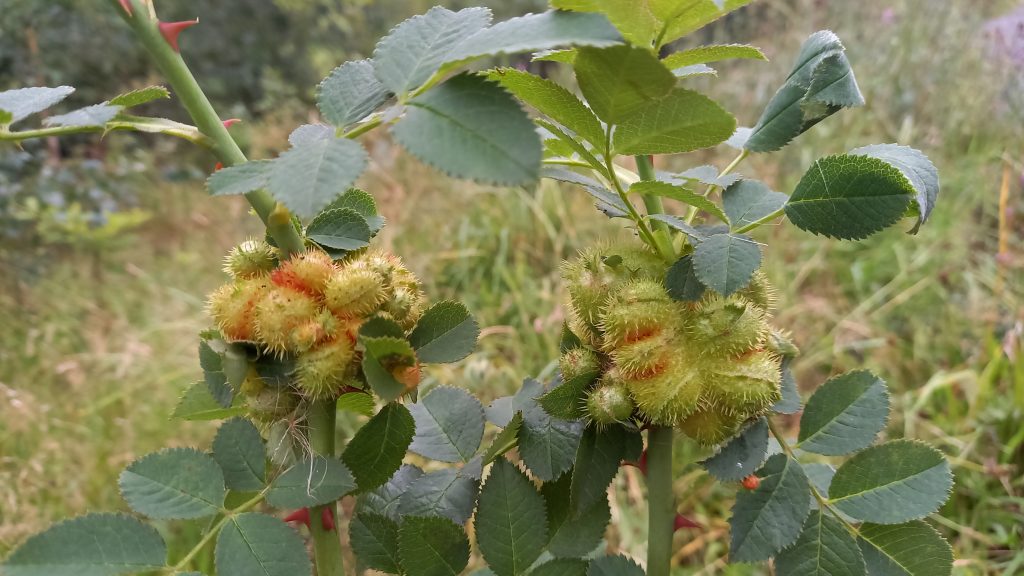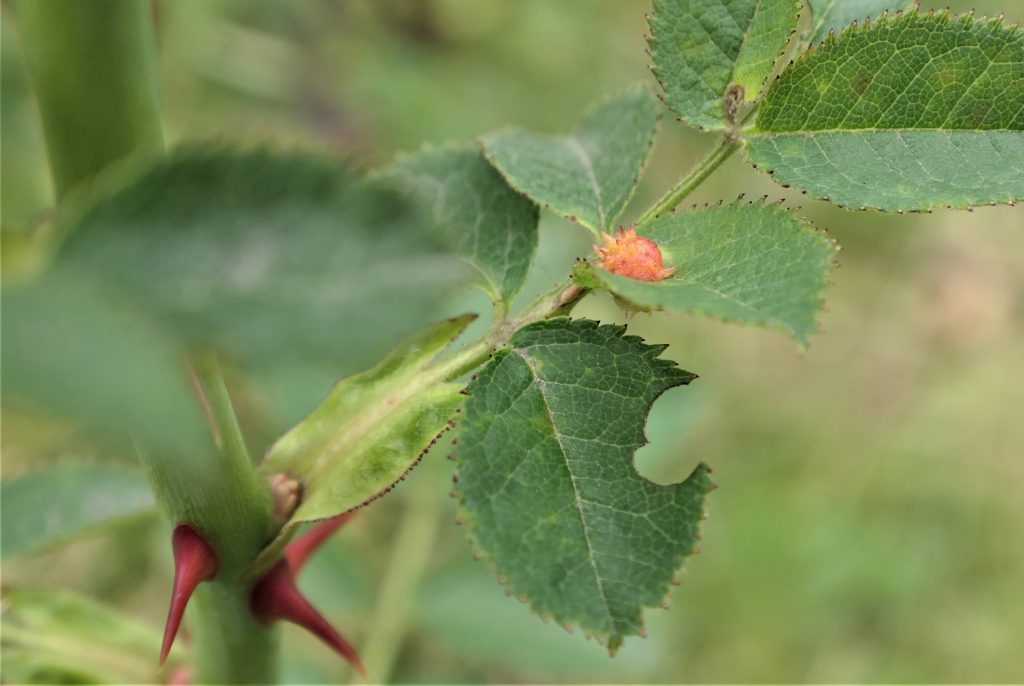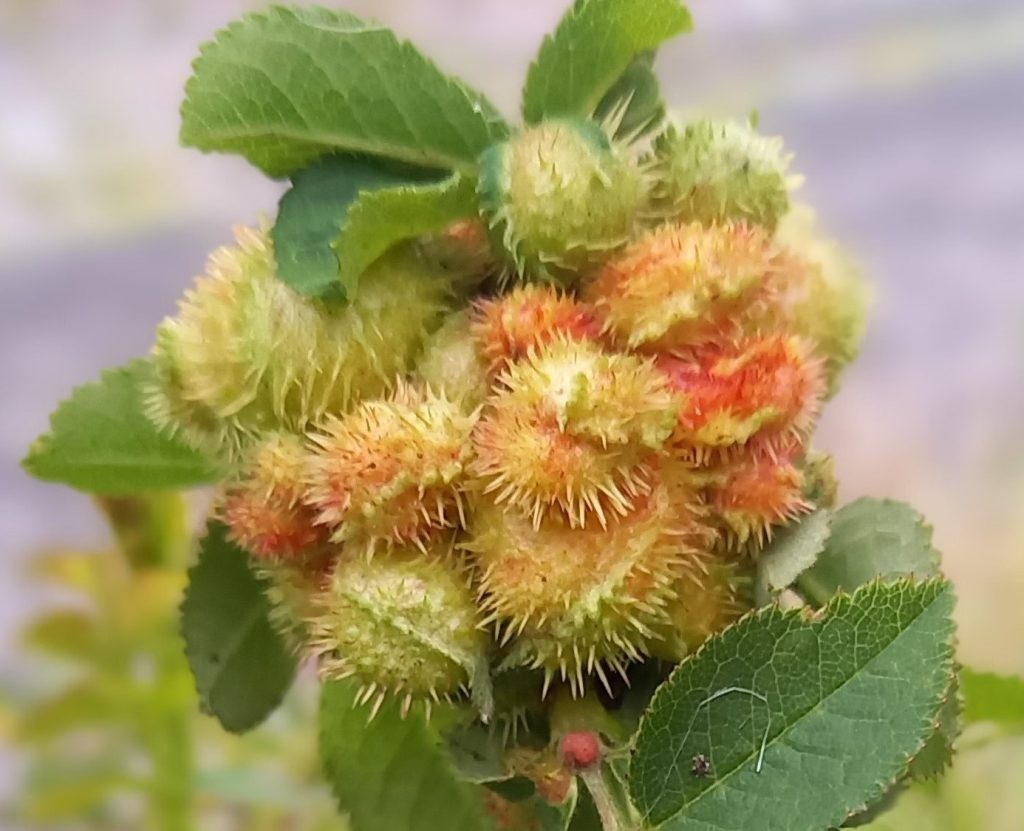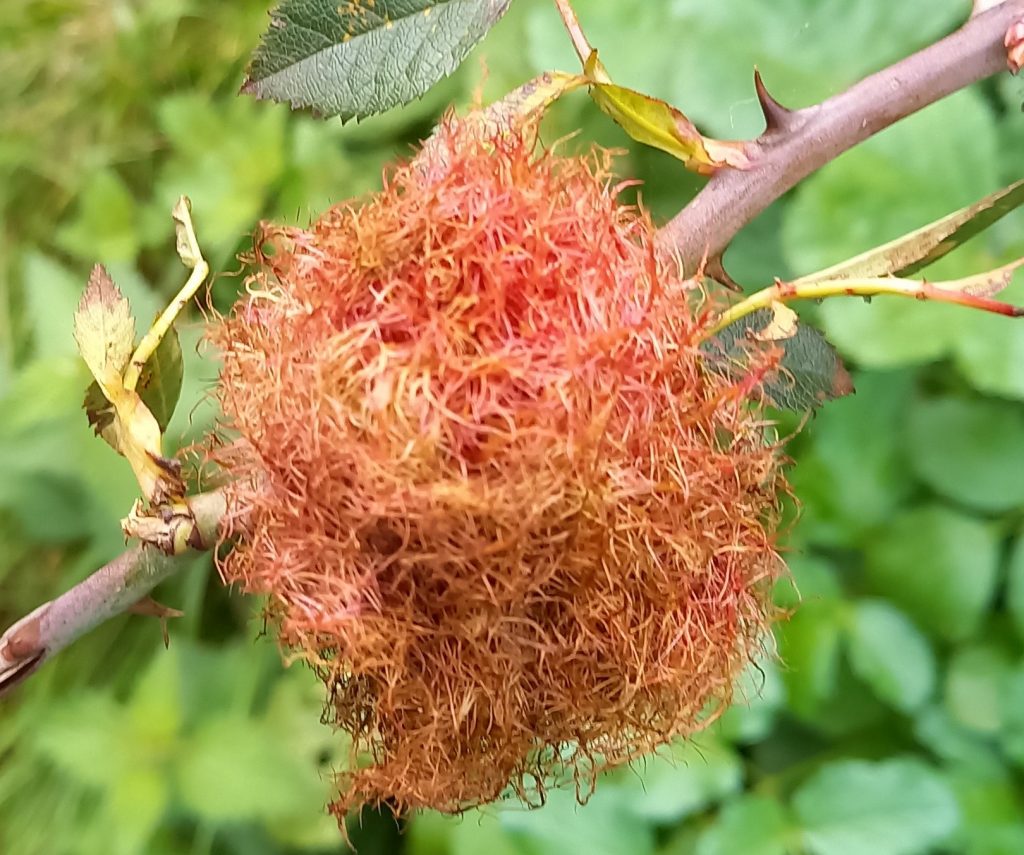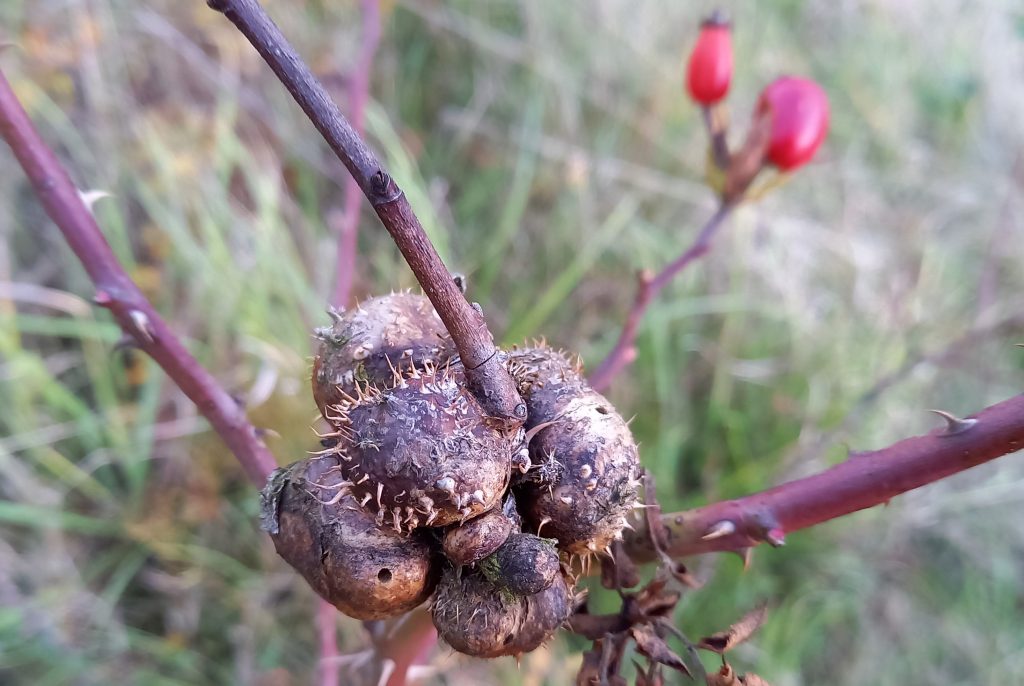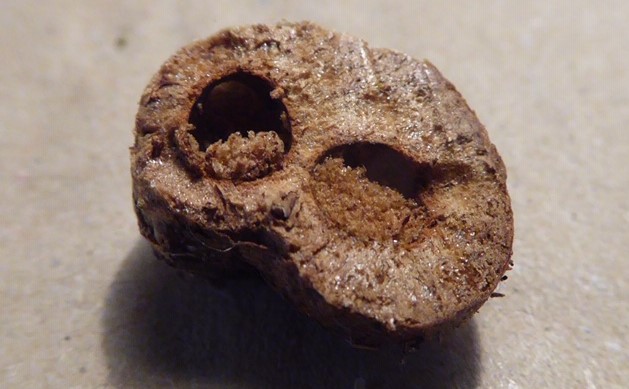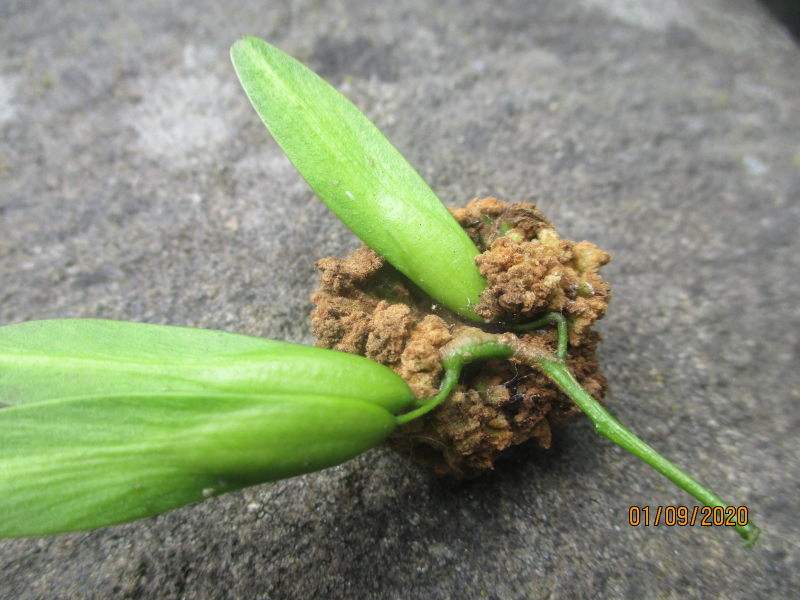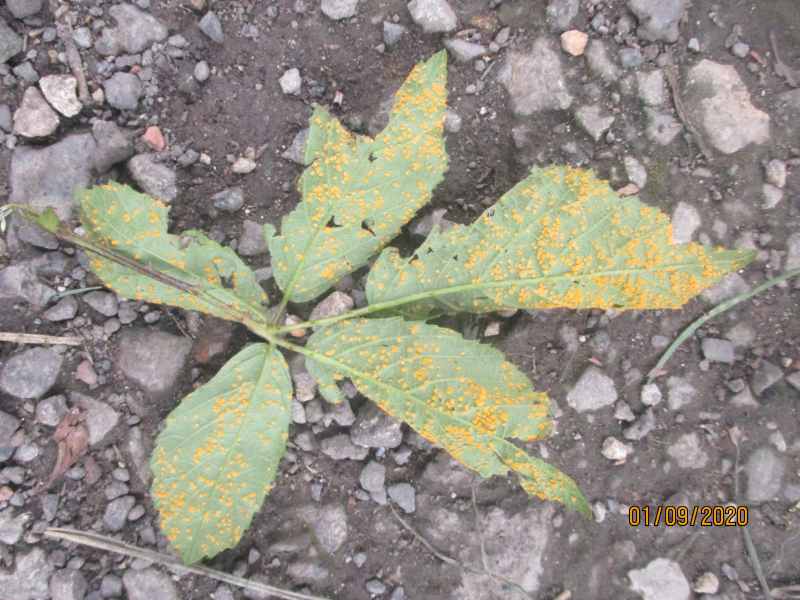AutumnWatch Galls. Looking back to AutumnWatch you may remember a sequence of images of galls including this impressive example …
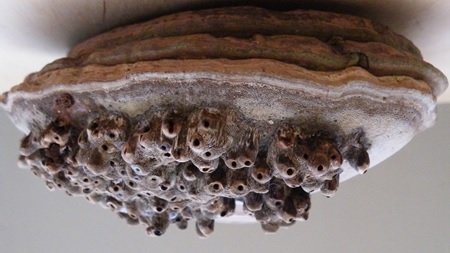
They are the galls of the Yellow Flat-footed Fly (Agathomyia wankowiczii) on the Artist’s Bracket fungus (Ganoderma applanatum). The only recorded example in Barnsley, it was found by Geoff Jackson in 2016 on a felled Horse Chestnut tree in Woolley Bank woods.
The galls start as small warts, growing up to 1cm in height and caused by the fly depositing its eggs in the fungus. Inside each wart is the grub of the fly. Once the grub is fully grown it bores a hole into the top of the gall and falls to the ground where it buries itself into the soil before it pupates to turn into the adult fly. The holes in this example show that the larvae have left the galls. The fly needs this fungus to survive.
Another local gall seen on AutumnWatch was the Diplolepis mayri, another first for Barnsley. [See earlier post]
Catherine tells us that her article about the galls on Barnsley Main has now been published in the British Naturalist Association magazine. Congratulations Catherine!


